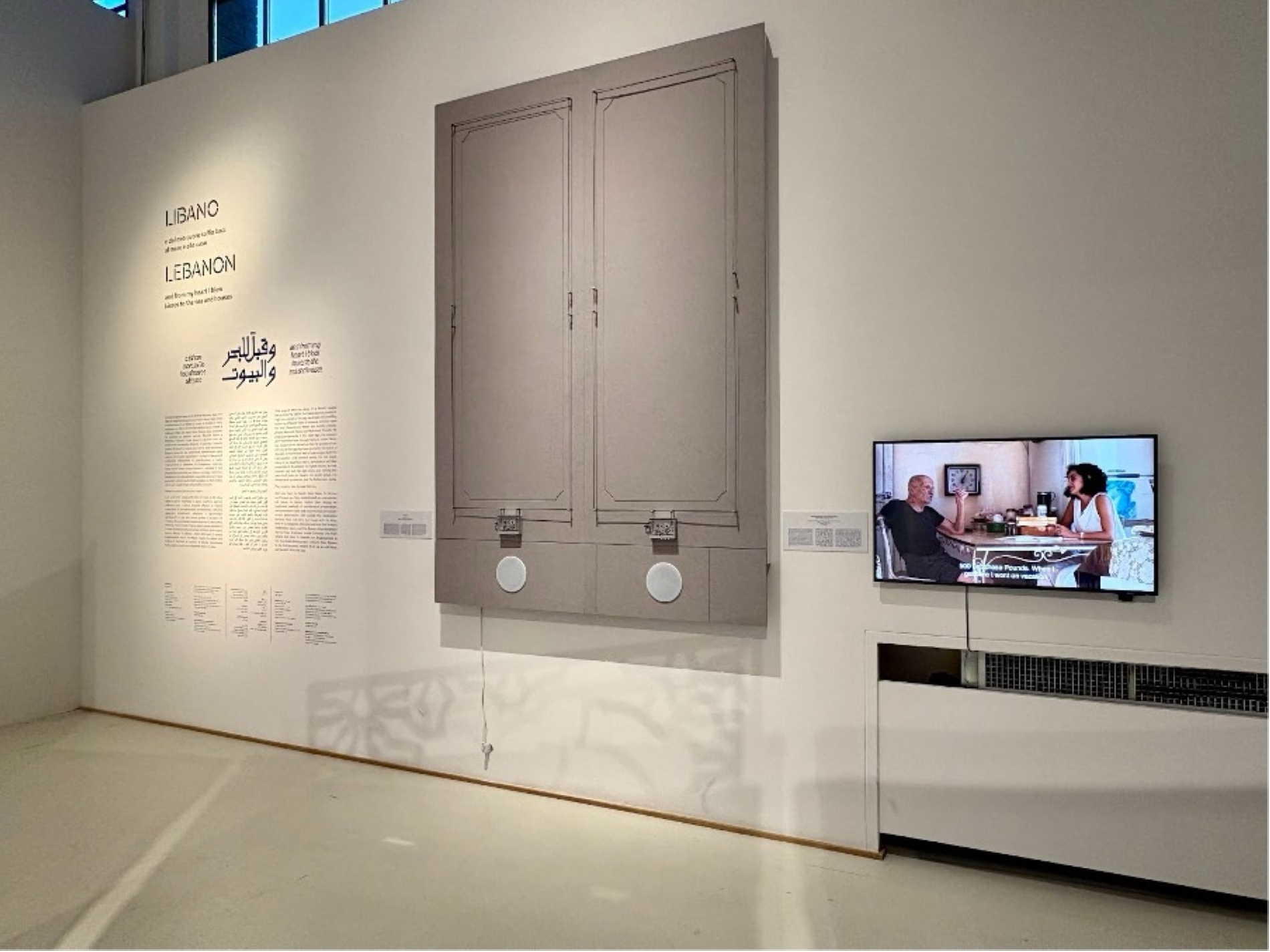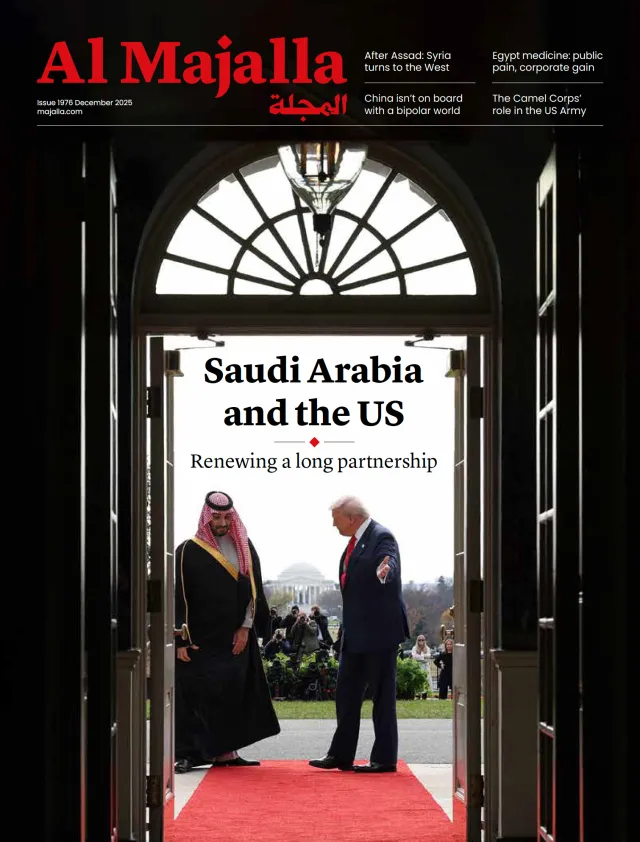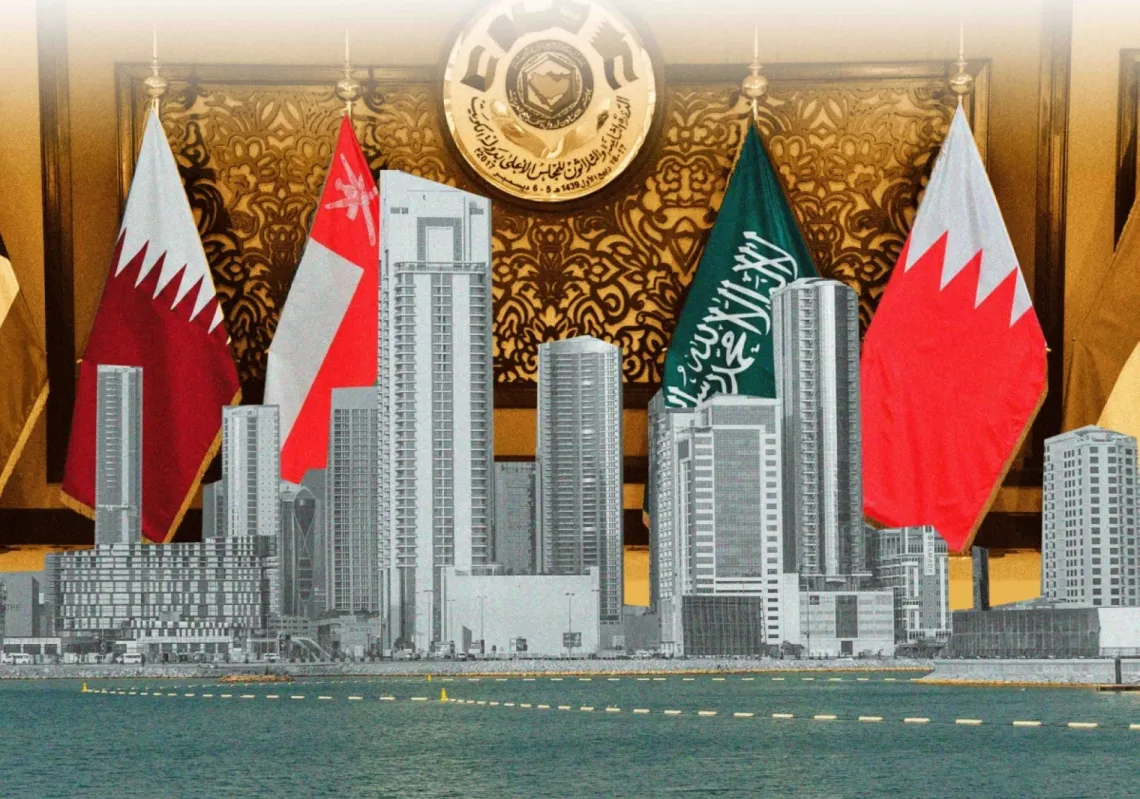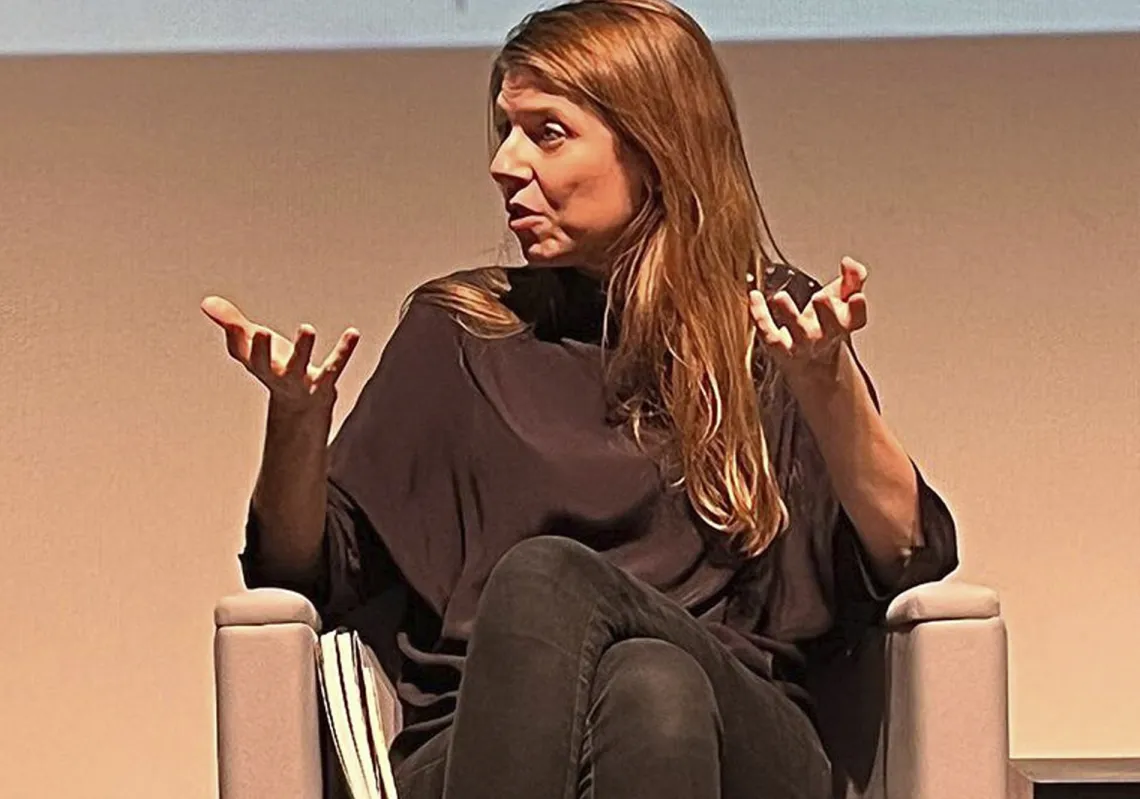After a photo of a beautiful house in Beirut overlooking the Ain Mreisseh Corniche was posted on social media, people expressed their interest and admiration for it. “How exquisite!” wrote one. “Where is this place? Can we book it? Is it a café, a restaurant, or perhaps a hotel?” Property by the sea is expensive. The house, built in 1925, is prime real estate, but was in dire need of renovation.
Cue the granddaughter of the original owners, who decided to do so in collaboration with local artists and open it to the public as an exhibition space. With its views of the Mediterranean, public spaces on Ain Mreisseh Corniche are increasingly rare.
Unmistakable landmark
In a city that so often builds over its own memory, the house is a landmark that is impossible to miss. An old three-storey building that looks out to sea, its second floor houses the apartment. It is a rare survivor in a neighbourhood now overrun by towers, hotels and vast residential complexes.
This building has remained intact since its construction in 1925. It has withstood war, urban expansion, and architectural damage through 1990s ‘reconstruction’ efforts following the Lebanese Civil War. It is Ala Tannir’s family’s home, which she entered for the first time in 2021, a year after the Beirut Port explosion in 2020. For decades, it had been rented out to a woman, but she vacated it following the blast.
Ala stepped into the home that had been owned by her paternal grandmother and still stands on land belonging to the Tannir family. It was suspended in ruin, with shattered glass and splintered wood from the 2020 devastation. Unlike many homes damaged by that explosion, it had not been repaired because no one was living in it.

Family connection
Khalo Aziz (Uncle Aziz), as Ala affectionately calls him, was born in the house in 1928. Now aged 97, he still lives on the building’s top floor. When the house was built in 1925 (official records mistakenly list it as 1935), it had only two storeys, but in the 1950s, Aziz travelled to Saudi Arabia to work in a printing press, saving enough money to add a third floor. He has lived there ever since.
Several reasons prompted Ala and her family to restore the house. Not only had she studied architecture in Beirut, but the memory of her late father had a profound influence on her. He had spent his entire life in that home, and his deep attachment to the house and the sea had shaped her own emotional connection. Its survival through war and waves of urban change further deepened its significance.
Another important factor was the continued presence of Khalo Aziz in the building. Through her conversations with him, Ala came to realise how her family's history was inextricably linked to the house and the land. The Tannir family migrated from Latakia to Beirut 250 years ago and settled in Ain Mreisseh, where they have remained to this day. Their connection to the place is professional, personal, communal, and historic.
Stepping into the house, visitors see the sea from (what was once) the main living room, a dream home for most Lebanese. To wake up to such a view instead of a congested street and traffic is a rare privilege. Why would Ala give it up, even temporarily, to open the house to the public? She says she aims to preserve her family's story through the exhibition, transforming private memories into a shared, accessible experience.

A rare space
With spaces like this so rare in Beirut, Ala feels a responsibility to use it to help residents reconnect with their heritage and identity. That is how she had the idea of staging an exhibition on the house's history and architecture—to encourage broader reflection and dialogue. In 2021, Ala began looking for funding opportunities.
A highly competitive grant was being offered by a foundation based in Chicago. Instead of following a conventional approach to restoration, she proposed that the process itself be an artistic project, inviting artists to contribute to the restoration, thus turning it into a collaborative, creative endeavour. For Ala, these artists and designers are the project's beating heart.
In spring 2022, she secured the grant, along with additional support from the AFAC Foundation, which enabled her to move forward with her vision. Design work began in late 2022, and the workshop phase started in spring 2023, concluding in September 2024. The exhibition was initially scheduled to open on 26 September 2024, but Israel's war against Hezbollah made it impossible to proceed as planned.
Scars-turned-art
The opening was postponed until May 2025. The restoration of the house featured five artistic interventions spread across most of its rooms. The mashrabiya (a type of projecting oriel window, with intricately carved wooden latticework) situated above the sea-facing facade had been damaged by the port explosion.
Ala chose not to conceal the impact of that event. Instead, she wanted it preserved within the mashrabiya itself. Artist Jana Traboulsi incorporated the broken fragments into her design while infusing it with a visual evocation of the sea. The contrast with the surrounding, undamaged mashrabiyas remains clearly visible.

Inside the main room, two further works were installed. Musician Khyam Allami created a sound-based installation using a tonal system inspired by the spatial volumes of the house. The piece subtly echoes the rhythm of the sea.
Architect and Islamic art historian Khaled Malas's contribution involves the home's ventilation system. He designed air conditioning covers made from iron and mother-of-pearl, inscribing the three longest words in the Qur'an. The iron symbolises resilience and permanence, while the mother-of-pearl creates a thematic link to the sea.

Awards and reflection
In the final room, two additional works were presented. The first is a film that Ala produced in collaboration with Khalo Aziz, which captures their conversation about their family and the history of their home. It plays on a continuous loop within the room.

The second piece is by physician and artist Lara Tabet, who collected seawater samples, tracked bacterial activity, and transformed the patterns into a mural on the wall.
The project was showcased at the Lebanese Pavilion during the Triennale Milano International Exhibition, where it received the award for Best Lebanese Pavilion. Elements were also exhibited in Milan, including the reconstructed mashrabiya, the documentary featuring Aziz, and other installations.
Ala says she is often asked why she does not live in the house and why she leaves such a breathtaking view and direct access to the sea unused. Her response is that many visitors arrive expecting traditional art, yet it often takes them time to grasp the deeper artistic interventions woven into the fabric of the home.
This is no conventional exhibition. It is a home that remembers, a story whispered through walls, objects, and the echoes of those who lived there.












